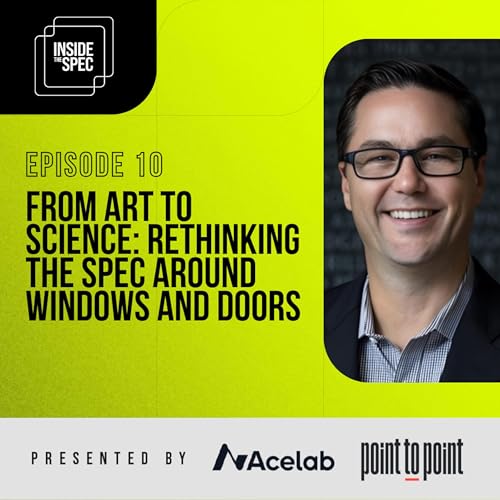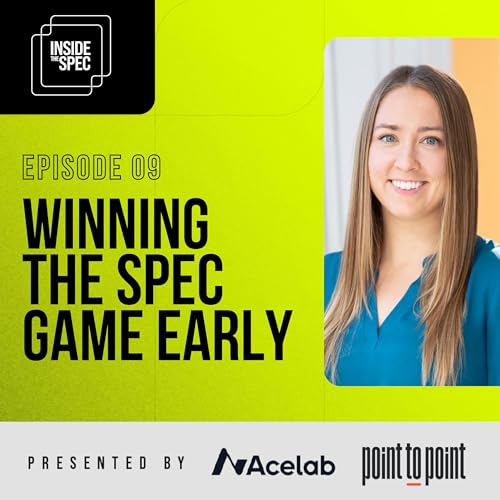“The framework is a really meaningful and helpful tool to simplify that complexity”
Summary
In this episode of Inside the Spec, hosts Megan Kacvinsky and Vardhan Mehta speak with Laurel Chądzyński, VP of Engagement at Mindful Materials, about the transformative role of the Common Materials Framework (CMF). Laurel explains how CMF serves as a common language for sustainable building materials, rooted in the five impact areas of the AIA Materials Pledge. The discussion highlights how the framework simplifies a complex landscape of certifications, helps manufacturers connect with architects, and creates a pathway for widespread adoption across the industry. They also explore how CMF supports decision-making, fosters ROI, and prepares the building industry for the next wave of sustainable innovation.
Key Insights
- The Common Materials Framework translates over 600 data points into practical tools aligned with five impact areas: human health, climate health, ecosystem health, social equity, and circular economy.
- Adoption is growing, with major firms like Gensler embedding CMF-aligned requirements into product standards.
- CMF simplifies sustainability for both experts and newcomers, serving as a roadmap for manufacturers and an educational tool for architects.
- The TACO spectrum (Transparency, Assessment, Commitment, Optimization) guides manufacturers in setting goals for product development.
- Mindful Materials is shifting from hosting a central database to enabling connected ecosystems through tech partners like Acelab, bringing CMF data directly into project workflows.
Practical Takeaways for Manufacturers
- Use CMF to align sustainability investments with market demands and demonstrate ROI.
- Understand that architects increasingly require transparency documents (EPDs, HPDs, GWP data) as baseline expectations.
- Leverage CMF to simplify responses to client requests, streamline data management, and position products for specification by leading firms.
- Engage with CMF resources and the new toolkit (to be launched at GreenBuild) to structure data, optimize products, and communicate sustainability effectively.
About our Guest
Laurel Chądzyński is VP of Engagement at Mindful Materials, a nonprofit uniting manufacturers, architects, certifying bodies, and owners around a shared vision of healthier, more sustainable building materials. Laurel’s work centers on expanding adoption of the Common Materials Framework, aligning diverse stakeholders, and creating tools to accelerate industry transformation.
Quotable Moments
“If you were starting from the beginning, you could use the framework to look and say, what does optimized look like?” – Laurel Chądzyński
“We want the data connected so that it’s in front of people whenever they are making materials decisions.” – Laurel Chądzyński
“The water’s warm—everybody can jump in. We want to get more folks on board.” – Laurel Chądzyński
Next Steps for Manufacturers
This episode emphasizes the importance of moving beyond compliance toward optimization and long-term alignment with market leaders. Manufacturers are encouraged to engage with CMF, participate in Mindful Materials’ network, and prepare for the
GreenBuild 2025 toolkit release, which will provide guidance, case studies, and resources for integrating sustainability into product development and marketing. Show up at Greenbuild: Explore the CMF Toolkit sessions, data ecosystem talks, and industry networking to accelerate adoption.
 2025/11/2135 分
2025/11/2135 分 2025/09/2645 分
2025/09/2645 分 2025/08/0329 分
2025/08/0329 分 43 分
43 分 53 分
53 分 49 分
49 分 43 分
43 分 2025/04/0744 分
2025/04/0744 分
